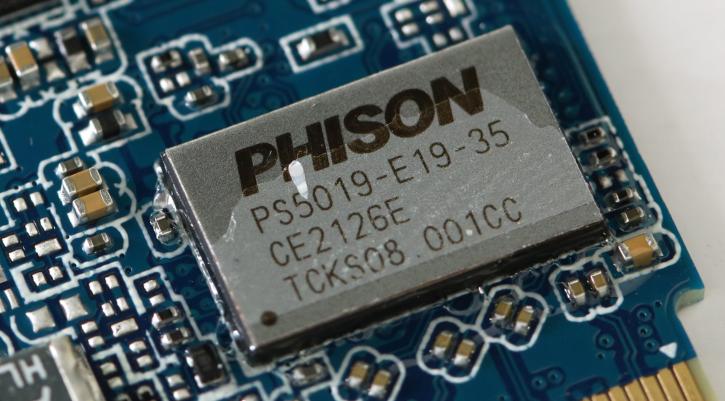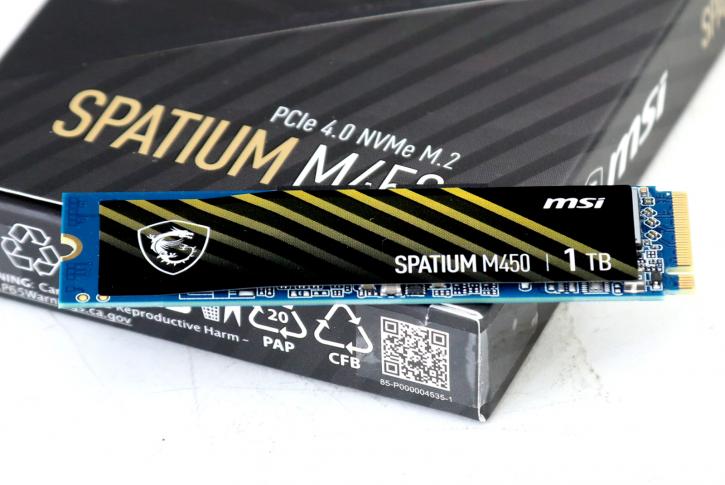Final Words & Conclusion
Final Words & Conclusion
The Spatium M450 achieves its performance by combining the Phison E19 controller with Micron's most recent 172-layer Micron NAND memory, the NAND is written as TLC, which we certainly appreciate. This is a mid-range NVMe SSD in every way, and that is something we need to acknowledge. As a result, PCIe 4.0 compliance is essentially a label on a box, adding no value to system functioning. In comparison, today's performance was readily comparable to an enthusiast-level performance level two years ago. This highlights how swiftly technology is progressing. The price of 12 cents per GB is a pleasant trade-off, making this NVMe 1.4 SSD an very reasonable alternative.
Endurance
We've talked about endurance previously; it's the number of times NAND cells can be written before they begin to malfunction. The SSD uses TLC written NAND and our 1TB model has a proper 600 TB written capacity for endurance. Now, if a NAND cell fails, it does not necessarily indicate that your data is lost. Many algorithms are constantly monitoring and managing your data; for example, if a cell's lifetime is about to expire, the bits inside that cell will be relocated to a more healthy cell. How long does a 600 TWB storage unit last before NAND flash cells go the way of the dodo? Well, if you are a really extreme user, you might be writing 50 GB per day (really normal users probably won't even write that per week), but based on that value, 50GB x 365days= 18.25 TB per year written. So that's almost 33 years of usage and half that for the 500GB SSD version. 50 GB per day each day of the year is a very ambitious number.
Performance
While the M450 performs admirably throughout the book, it is not a very passionate enthusiast-class device, particularly when it comes to random writes under severe workloads, which are just okay but just that. On the other hand, sequential performance is outstanding, with read and write rates exceeding 3 GB/s and more than 2 GB/s, respectively. However, you must question if you truly need more performance at a larger cost.
Trace tests, and hence real-world use benchmarks, are notoriously difficult to optimize for in the majority of cases. This is why we employ sophisticated trace tests to confirm our hypotheses. The Spatium M450 performs decently in this area at best and certainly is not a strong point. The Spatium M450 sequential write performance is outstanding (copying, creating an ISO image, or creating a movie).
Heat
Thermal throttling will only occur under very heavy load situations, but only to a little degree; we noted the transfer rate decrease to 1.5 GB/s from 3 GB/s after a few minutes of operation. Although the SSD, and notably its NAND, get ill-tempered during such testing, the components are engineered to perform at such temperatures. We always recommend that you either mount an M2 SSD under your motherboard's heatsink or manually apply one to your system. This will be quite beneficial.
Concluding
When I first began testing this product, the SSD looked to be average (by today's standards) throughout the testing procedure, and indeed, everything looks to be average by today's standards. With read/write rates easily reaching 2 GB/sec and hitting 3 GB/sec, we shouldn't rule out considerable value here. In this scenario, the 1TB SSD costs 110 USD, or 11 cents per GB, making it one of the cheaper and PCIe 4.0 NVMe SSDs on the market today. But this is a PCIe 4.0 product offering PCIe 3.0 performance. The endurance levels are sufficient only for the biggest 1 TB model; for example, if you write 50GB daily, every day of the year, you'll have 33 years before discontinuing cells becomes an issue. MSI's most important issue is that, while 1 TB is fantastic, the current PC gaming population needs affordable 2TB or 4TB versions, which are not yet available for the M450 series. We can only hope that larger versions of this product be available in the future because, while performance is decent, this product provides great value at 12 cents per GB. Additionally, the warranty is guaranteed for five years from the date of purchase or until the TBW value is reached, whichever comes first. The M450 is without a doubt a good value for money product. If you do not have a PC capable of handling extremely demanding workloads, this will suffice absolutely fine.
Recommended Downloads



